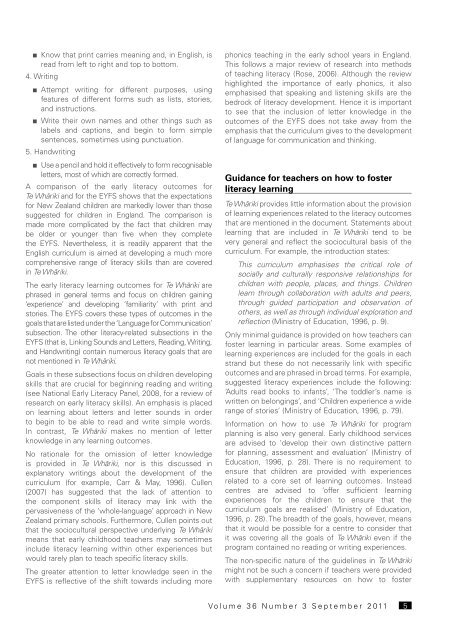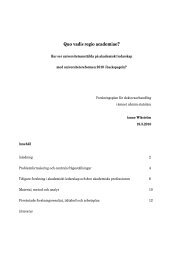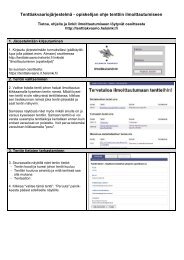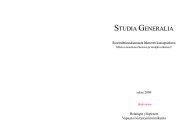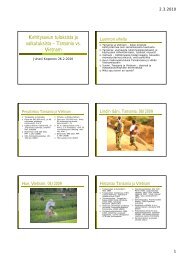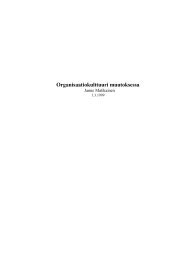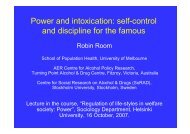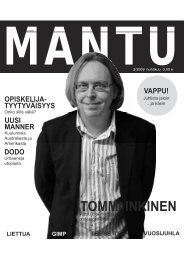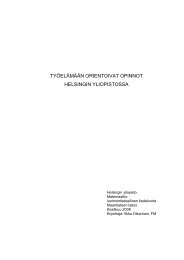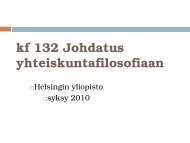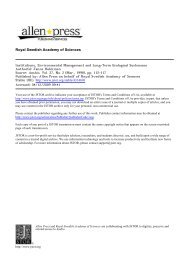learning outcomes. Literacy outcomes are includedwithin the third goal <strong>of</strong> the Communication strand, whichstates: ‘Children experience an environment where theyexperience the stories and symbols <strong>of</strong> their own andother cultures’ (Ministry <strong>of</strong> Education, 1996, p. 78).Under this goal the following literacy learning outcomes(Ministry <strong>of</strong> Education, 1996, p. 78) are listed:Children develop:■■An understanding that symbols can be ‘read’ byothers and that thoughts, experiences, and ideascan be represented through words, pictures, print,numbers, sounds, shapes, models, and photographs.■■Familiarity with print and its uses by exploring andobserving the use <strong>of</strong> print in activities that havemeaning and purpose for children.■■Familiarity with an appropriate selection <strong>of</strong> thestories and literature valued by the cultures in theircommunity.■■An expectation that words and books can amuse,delight, comfort, illuminate, inform, and excite.■■Experience with some <strong>of</strong> the technology andresources for mathematics, reading, and writing.■■Experience with creating stories and symbols.The general nature <strong>of</strong> the above learning outcomes canbe partly explained by recognising that the outcomesare designed to be applicable to all children throughoutthe birth–five years age range. Hence the outcomes donot convey an expectation that older children may becapable <strong>of</strong> more complex learning than younger children.In contrast, the EYFS is more explicit about age-relateddevelopmental changes (see Practice guidance for the<strong>Early</strong> Years Foundation Stage, Department for Children,Schools and Families, 2008a). The framework <strong>of</strong> theEYFS divides learning and development into six areas:■■Personal, Social and Emotional Development■■Communication, Language and Literacy■■Problem Solving, Reasoning and Numeracy■■Knowledge and Understanding <strong>of</strong> the World■■Physical Development■■Creative Development.Each <strong>of</strong> these areas is further divided into subsections.For example, Communication, Language, and Literacyis subdivided into the following: Language forCommunication, Language for Thinking, Linking Soundsand Letters, Reading, Writing, and Handwriting.Within each subsection, descriptive information isprovided about what children may typically learn withinthe following overlapping age ranges: birth–11 months,8–20 months, 16–26 months, 22–36 months, 30–50months, and 40–60+ months.Although information is provided about age-relatedchanges, the EYFS guidelines recognise that there isconsiderable variation between children. Cautions areprovided that the descriptions <strong>of</strong> learning should not beseen as age-related goals. It is also noted that ‘children willnot necessarily progress sequentially through the stages’and ‘some elements may appear to have been achievedvery quickly, others will take much longer (Department forChildren, Schools and Families, 2008a, p. 11).Specific goals are stated for the time that childrencomplete the <strong>Early</strong> Years Foundation Stage. These finalgoals (known as the ‘early learning goals’) are designedto be at a level that children can achieve ‘by the end <strong>of</strong>the year in which they turn five’. (Unlike New Zealand,where nearly all children start school on their fifth birthday,children in England start school in the term in which theyturn five. Hence some children will begin primary school afew months before they turn five, whereas other childrenmay be nearer five and a half years.)The <strong>Early</strong> learning goals for literacy occur within fivesubsections <strong>of</strong> the Communication, Language, andLiteracy division <strong>of</strong> the EYFS (Department for Children,Schools, and Families, 2008b, p. 13). (Additional goalsthat focus purely on listening and speaking are notincluded in the following list.)1. Language for Communication■■Enjoy listening to and using spoken and writtenlanguage, and readily turn to it in their play and learning.■■Listen with enjoyment, and respond to stories, songsand other music, rhymes and poems and make uptheir own stories, songs, rhymes and poems.2. Linking Sounds and Letters■■Hear and say sounds in words in the order in whichthey occur.■■Link sounds to letters, naming and sounding theletters <strong>of</strong> the alphabet.■■Use their phonic knowledge to write simple regularwords and make phonetically plausible attempts atmore complex words.3. Reading■■Explore and experiment with sounds, words, andtexts.■■Retell narratives in the correct sequence, drawingon language patterns <strong>of</strong> stories.■■Read a range <strong>of</strong> familiar and common words andsimple sentences independently.■ ■ Show an understanding <strong>of</strong> the elements <strong>of</strong> storiessuch as main character, sequence <strong>of</strong> events andopenings, and how information can be found in nonfictiontexts to answer questions about where, whoand how.4A u s t r a l a s i a n J o u r n a l o f E a r l y C h i l d h o o d
■■Know that print carries meaning and, in English, isread from left to right and top to bottom.4. Writing■■Attempt writing for different purposes, usingfeatures <strong>of</strong> different forms such as lists, stories,and instructions.■■Write their own names and other things such aslabels and captions, and begin to form simplesentences, sometimes using punctuation.5. Handwriting■■Use a pencil and hold it effectively to form recognisableletters, most <strong>of</strong> which are correctly formed.A comparison <strong>of</strong> the early literacy outcomes forTe Whāriki and for the EYFS shows that the expectationsfor New Zealand children are markedly lower than thosesuggested for children in England. The comparison ismade more complicated by the fact that children maybe older or younger than five when they completethe EYFS. Nevertheless, it is readily apparent that theEnglish curriculum is aimed at developing a much morecomprehensive range <strong>of</strong> literacy skills than are coveredin Te Whāriki.The early literacy learning outcomes for Te Whāriki arephrased in general terms and focus on children gaining‘experience’ and developing ‘familiarity’ with print andstories. The EYFS covers these types <strong>of</strong> outcomes in thegoals that are listed under the ‘Language for Communication’subsection. The other literacy-related subsections in theEYFS (that is, Linking Sounds and Letters, Reading, Writing,and Handwriting) contain numerous literacy goals that arenot mentioned in Te Whāriki.Goals in these subsections focus on children developingskills that are crucial for beginning reading and writing(see National <strong>Early</strong> Literacy Panel, 2008, for a review <strong>of</strong>research on early literacy skills). An emphasis is placedon learning about letters and letter sounds in orderto begin to be able to read and write simple words.In contrast, Te Whāriki makes no mention <strong>of</strong> letterknowledge in any learning outcomes.No rationale for the omission <strong>of</strong> letter knowledgeis provided in Te Whāriki, nor is this discussed inexplanatory writings about the development <strong>of</strong> thecurriculum (for example, Carr & May, 1996). Cullen(2007) has suggested that the lack <strong>of</strong> attention tothe component skills <strong>of</strong> literacy may link with thepervasiveness <strong>of</strong> the ‘whole-language’ approach in NewZealand primary schools. Furthermore, Cullen points outthat the sociocultural perspective underlying Te Whārikimeans that early childhood teachers may sometimesinclude literacy learning within other experiences butwould rarely plan to teach specific literacy skills.The greater attention to letter knowledge seen in theEYFS is reflective <strong>of</strong> the shift towards including morephonics teaching in the early school years in England.This follows a major review <strong>of</strong> research into methods<strong>of</strong> teaching literacy (Rose, 2006). Although the reviewhighlighted the importance <strong>of</strong> early phonics, it alsoemphasised that speaking and listening skills are thebedrock <strong>of</strong> literacy development. Hence it is importantto see that the inclusion <strong>of</strong> letter knowledge in theoutcomes <strong>of</strong> the EYFS does not take away from theemphasis that the curriculum gives to the development<strong>of</strong> language for communication and thinking.Guidance for teachers on how to fosterliteracy learningTe Whāriki provides little information about the provision<strong>of</strong> learning experiences related to the literacy outcomesthat are mentioned in the document. Statements aboutlearning that are included in Te Whāriki tend to bevery general and reflect the sociocultural basis <strong>of</strong> thecurriculum. For example, the introduction states:This curriculum emphasises the critical role <strong>of</strong>socially and culturally responsive relationships forchildren with people, places, and things. Childrenlearn through collaboration with adults and peers,through guided participation and observation <strong>of</strong>others, as well as through individual exploration andreflection (Ministry <strong>of</strong> Education, 1996, p. 9).Only minimal guidance is provided on how teachers canfoster learning in particular areas. Some examples <strong>of</strong>learning experiences are included for the goals in eachstrand but these do not necessarily link with specificoutcomes and are phrased in broad terms. For example,suggested literacy experiences include the following:‘Adults read books to infants’, ‘The toddler’s name iswritten on belongings’, and ‘Children experience a widerange <strong>of</strong> stories’ (Ministry <strong>of</strong> Education, 1996, p. 79).Information on how to use Te Whāriki for programplanning is also very general. <strong>Early</strong> childhood servicesare advised to ‘develop their own distinctive patternfor planning, assessment and evaluation’ (Ministry <strong>of</strong>Education, 1996, p. 28). There is no requirement toensure that children are provided with experiencesrelated to a core set <strong>of</strong> learning outcomes. Insteadcentres are advised to ‘<strong>of</strong>fer sufficient learningexperiences for the children to ensure that thecurriculum goals are realised’ (Ministry <strong>of</strong> Education,1996, p. 28). The breadth <strong>of</strong> the goals, however, meansthat it would be possible for a centre to consider thatit was covering all the goals <strong>of</strong> Te Whāriki even if theprogram contained no reading or writing experiences.The non-specific nature <strong>of</strong> the guidelines in Te Whārikimight not be such a concern if teachers were providedwith supplementary resources on how to fosterVo l u m e 3 6 N u m b e r 3 S e p t e m b e r 2 011 5
- Page 3 and 4: 1.5 Display, download or print the
- Page 5 and 6: Volume 36 Number 3 September 2011Jo
- Page 7: Curriculum guidelines for early lit
- Page 14 and 15: Korean children’s cultural adjust
- Page 16 and 17: The Early Years Learning Framework
- Page 18: Kyung Min said listening in class w
- Page 21 and 22: immediately impact on children’s
- Page 23 and 24: Child participation in the early ye
- Page 25 and 26: their kindergarten day. A study by
- Page 27 and 28: the overall organisation, routines,
- Page 29 and 30: Council of Australian Governments (
- Page 31: Learning to measure length in the f
- Page 34 and 35: ■■a 40-minute, one-on-one inter
- Page 36 and 37: ■■72 per cent of the project sc
- Page 38 and 39: In other words, the difficulties th
- Page 40 and 41: An analysis of New Zealand’s chan
- Page 42 and 43: Before five also gave equivalent st
- Page 44 and 45: some evidence that curriculum effec
- Page 46 and 47: achievement; aiding transition to s
- Page 49 and 50: ‘It’s a mystery!’A case study
- Page 51: analysis of discourse the children
- Page 56 and 57: ange of objects on the floor (such
- Page 58 and 59:
Observation and recording informati
- Page 60 and 61:
‘I’m making it different to the
- Page 62 and 63:
Purpose and theoretical frameworkIn
- Page 64 and 65:
The fingers were reaching out acros
- Page 66 and 67:
Figure 7. ‘I take this lovely lad
- Page 68 and 69:
Here, Rachel used substitution to r
- Page 70:
Evaluating the feasibility, effecti
- Page 73 and 74:
Table 2. Descriptive characteristic
- Page 75 and 76:
The children in this study were fro
- Page 77 and 78:
Vol. 36 No. 3 September 2011Austral
- Page 79 and 80:
implement the curriculum effectivel
- Page 81 and 82:
Table 2. Mean differences between H
- Page 83 and 84:
can be regarded as one of the infor
- Page 85 and 86:
Ganser, T. (2000). An ambitious vis
- Page 87 and 88:
(Buckhalt et al., 2009). Reduced qu
- Page 89 and 90:
invited families having difficulty
- Page 91 and 92:
Table 3. Mean hours of mother and f
- Page 93 and 94:
A reduction in night wakings might
- Page 95 and 96:
A preliminary exploration of childr
- Page 97 and 98:
adult support necessary for its eff
- Page 99 and 100:
Children’s cortisol and alpha-amy
- Page 102 and 103:
Connor, C., Son, S.-H., Hindman, A.
- Page 104 and 105:
Equity of access:Requirements of In
- Page 106 and 107:
excursions, which have been reporte
- Page 108 and 109:
We need a bus but we also need a st
- Page 110 and 111:
Appropriate child careIndigenous fa
- Page 112 and 113:
Australian Institute of Health and
- Page 114 and 115:
The Mosaic Approach relies on child
- Page 116 and 117:
participants (Altrichter, Posch, &
- Page 118 and 119:
distance. This involved trying to b
- Page 120 and 121:
Dockett, S., & Perry, B. (2003). Ch
- Page 122 and 123:
experiences (Bandura, 1997). Belief
- Page 124 and 125:
the curriculum while on their profe
- Page 126 and 127:
Exploring and evaluating levels of
- Page 128 and 129:
Level 2: Attending to feelingsThis
- Page 130 and 131:
This process to ensure coder stabil
- Page 132 and 133:
DiscussionStructured reflective pro
- Page 134 and 135:
Rock, T. C., & Levin, B. B. (2002).
- Page 136 and 137:
issues encountered in their caring
- Page 138 and 139:
pertaining to the impact and suppor
- Page 140 and 141:
Parents felt the policies involving
- Page 142 and 143:
and access suitable carers because
- Page 144 and 145:
Ievers, C. E., & Drotar, D. (1996).
- Page 146:
www.earlychildhoodaustralia.org.auE


